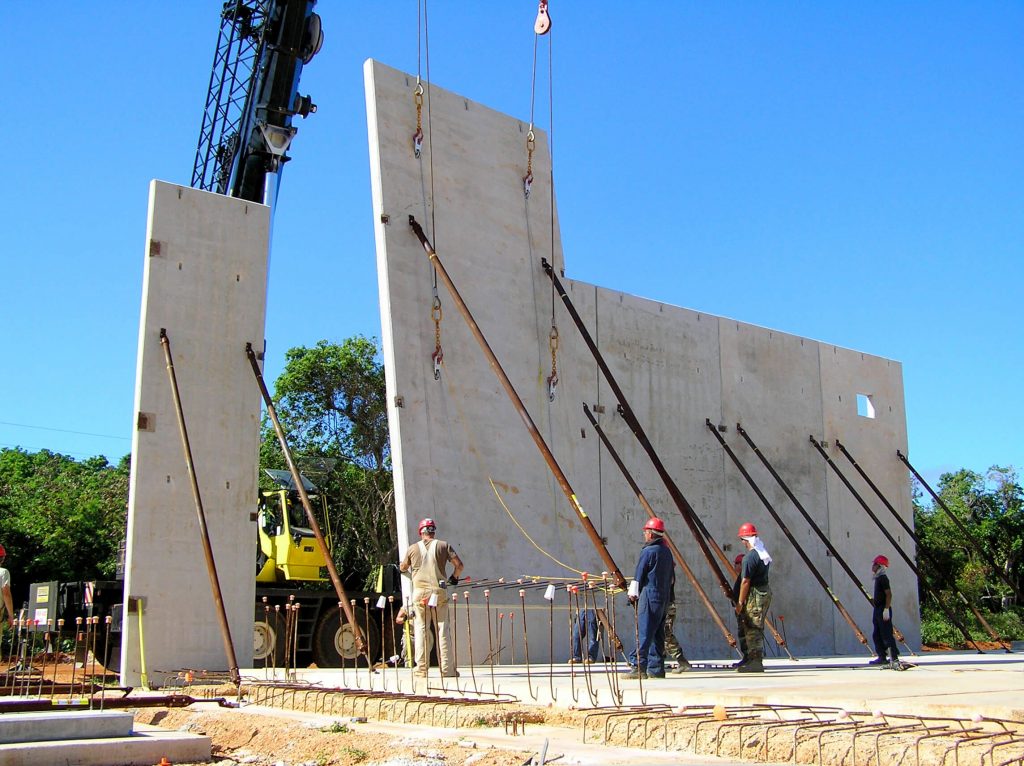How to Test and Check Concrete Temperature?
Like with many other materials, concrete can change in quality as a result of its temperature. This is especially important when there are certain temperature extremes where concrete is being poured.
Explore 12 Futuristic Technology Trends Solving Concrete's Biggest Challenges.
Concrete has to be relatively warm for it to set and cure properly. It needs to be at least 40 degrees Fahrenheit while poured and at least 50 degrees when curing. The demands for a supportive environment are so strict that sometimes an outside heating source is necessary to project warm air near the concrete during cold weather conditions.
A typical mass concrete mixture will generate heat as a result of the hydration process. This process requires the water within the cement to move around and merge. This will create the heat that is necessary for concrete to thrive. However, it still needs to be kept at a temperature where this process can actually be sustainable.
Contractors must carefully analyze the concrete mixture so it will solidify and stay strong for years to come. Concrete that is not set properly may have a hard time solidifying and can end up having very poor quality.
This shows the importance of testing temperature. A temperature monitoring device can help you out in cold and hot weather conditions to protect the concrete (surface). At Giatec, we have created a unique product called SmartRock®. This is a wireless sensor that helps you check concrete temperature and track how it goes from fresh to hardened stages. The temperature history can then be used to calculate the maturity index of concrete, enabling the user to predict its early-age compressive strength.
Thermal Control Plans
A thermal control plan allows contractors to monitor the temperature of early-age concrete in order to ensure that the maximal temperature gradient is not reached so that it cures properly. These temperature monitoring procedures are specific to the project and the concrete mix being used. They define the concrete temperature limits as well as the maximum temperature differential. This is done between the core and surface in order to prevent concrete cracking and other quality issues. They also state how often it should be measured. Learn More About Thermal Control Plans
What Are Concrete Temperature Sensors Used For?
Giatec’s SmartRock® is a fully-embedded wireless device that can be used to check temperature from fresh to hardened stages. Wireless sensors are installed within the concrete formwork, typically on the rebar before concrete is placed. The sensor is then connected to a mobile app which provides updates in real-time. The SmartRock app helps you tag sensors quickly via a QR code, receive proactive custom alerts and smart notifications, and provide multiple-company access to project data. The data is uploaded wirelessly to the cloud and you can also get alerts with Giatec 360™, allowing you to easily follow your thermal control and curing plan. is an advanced web-based dashboard for managing concrete pours, predicting and checking concrete temperature, analyzing temperature differentials, and setting up thresholds for your pours.
See how temperature monitoring is the right fit for your concrete projects here!
A concrete temperature test can be used for monitoring the variation of temperature on the surface of concrete, especially in the cold season, or to study the strength development in concrete. The latter is based on the maturity method and can be used to predict the early-age strength of concrete.
One important application for temperature sensors is to decide when covering concrete surfaces is necessary, or when it is safe to remove the coverings. Another important application is to decide when it is safe to open the formwork or shoring in a construction project.
How Do These Sensors Work?
The temperature sensors will typically work in many extreme conditions and can easily handle temperature values of up to 170 degrees Fahrenheit (as is the case for mass concrete foundations, retaining walls, or dams). However, the sensor will have to be buried in appropriate locations, and key structural components.
A reader is used to collect concrete temperature data. A traditional reader requires a wired connection to the sensor to retrieve the data. This can be done using wireless technology for the case of SmartRock sensor. The wireless sensor should be placed within a 3 to 4-inch distance from the surface. This will ensure that the signal strength is powerful enough to be detected by a smartphone or tablet. A mobile app will help the user to find and locate the sensors and connect to them. It is also used to retrieve the test data from the sensor and analyze the results.
The sensor collects temperature sensor in certain time steps (normally 30 minutes or less). This should be good enough as it can take a bit for the temperatures in your concrete to change rather substantially. Still, when used properly, it should not be much of a challenge for your app to give you the most accurate forms of analysis possible.
Curious About How Maturity Can Help You Reduce Labor Costs? Learn More Here!
Contact Giatec for Help
Giatec Scientific Inc. provides continuous technical support for our SmartRock concrete maturity sensor. You can always get in touch with us when you need assistance with installing the sensors, collecting the data, and analyzing the test results. Giatec’s SmartRock is a unique sensor that can be easily used in various construction projects.
SmartRock is designed using wireless technology for enhanced data management. It is rugged and waterproof, and the mobile app provides a user-friendly and intuitive environment to collect data, view results, and share reports with team members.
**Editors Note: This post was originally published in July 2018 and has been updated for accuracy and comprehensiveness on July 2022.











3 Responses
Is using an infrared radar gun to monitor cold weather concrete placement and acceptable method?
Hi Danny! Thanks for your question. Unfortunately, using an infrared radar gun to monitor cold weather concrete placement is not an acceptable method. This method would only be acceptable for near-surface imaging or to find the surface temperature of an element. The resolution would not be adequate to look at an element with even 30 cm of thickness and it would essentially provide the same results as using a thermometer on the surface of the element. It’s required to use embedded sensors at this point.
I hope that answers your question! Please feel free to email me at roxanne@giatec.ca if you have any further questions.
Now it is high tech instrumentation is available to monitor temperature. During 1980 we were to monitor temeprature by placing electrical wire and using Wheatstone bridge principle to monitor temperature for chimney raft and TG deck concrete wherein the cold water pipes were left inside to monitor temperature.